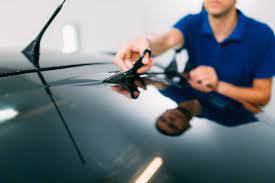Window tinting, a practice often associated with commercial window film enhancing a vehicle’s aesthetic appeal or adding privacy to a home, is a sophisticated technology with a rich history and multifaceted applications. While many see it as merely a style choice or a way to shield against the sun, window tinting encompasses a broad spectrum of benefits, technologies, and industry advancements. Let’s delve into the intricate world of window tinting and uncover why it’s much more than meets the eye.
The Evolution of Window Tinting
Window tinting’s origins trace back to the early 1960s when it was first developed to reduce glare and UV exposure in vehicles. Early films were relatively basic, providing a minimal range of tint levels and lacking in advanced properties. Over time, however, window tinting technology has evolved significantly. Today, films are engineered with precision, incorporating advanced materials like ceramic and metalized coatings to enhance their performance and longevity.
Types of Window Tinting Films
- Dyed Films: The earliest and most common type, dyed films are created by embedding color dyes between layers of film. They effectively reduce glare and provide a uniform look. However, they are less effective at blocking heat compared to more advanced options.
- Metalized Films: These films include tiny metal particles that reflect heat and UV rays. They offer superior heat rejection and durability but can interfere with electronic signals.
- Hybrid Films: Combining the benefits of dyed and metalized films, hybrid films offer balanced heat rejection, glare reduction, and a more neutral appearance without the interference of metal particles.
- Ceramic Films: The pinnacle of modern window tinting, ceramic films utilize advanced nano-ceramic technology to provide exceptional heat rejection, UV protection, and clarity. They do not interfere with electronic signals and are highly durable.
Benefits Beyond Aesthetics
While window tinting is often chosen for its visual appeal, its advantages extend far beyond mere aesthetics:
- UV Protection: Window tinting films block up to 99% of harmful UV rays, protecting both occupants and interior furnishings from fading and damage.
- Heat Reduction: Advanced films can reduce interior temperatures by up to 60%, making spaces more comfortable and reducing the load on air conditioning systems.
- Privacy and Security: Tinted windows offer increased privacy and can act as a deterrent to potential thieves by concealing valuables from view.
- Glare Reduction: Tinting reduces glare from the sun and headlights, enhancing driving safety and comfort.
- Energy Efficiency: By reducing heat gain, window tinting can lower energy bills, contributing to a building’s overall energy efficiency.
Installation and Maintenance
Proper installation is crucial for maximizing the benefits of window tinting. Professional installers ensure that films are applied smoothly and without bubbles or imperfections, which can affect performance and appearance. Regular maintenance involves gentle cleaning with non-abrasive materials and avoiding harsh chemicals that can damage the film.
Legal Considerations
Window tinting laws vary by region, with specific regulations governing the level of tint allowed on vehicles and residential properties. It’s essential to familiarize oneself with local laws to ensure compliance and avoid potential fines.
The Future of Window Tinting
The future of window tinting looks promising with ongoing advancements in film technology and applications. Innovations in materials and manufacturing techniques are likely to enhance the performance and versatility of window tinting films, making them even more beneficial for a wide range of uses.
In conclusion, window tinting is a dynamic and evolving field that offers a blend of functional and aesthetic benefits. As technology progresses, it will continue to play a significant role in enhancing comfort, safety, and efficiency across various environments. Whether for a car, home, or commercial space, window tinting is a testament to the intersection of art and science, providing solutions that are both practical and innovative.

